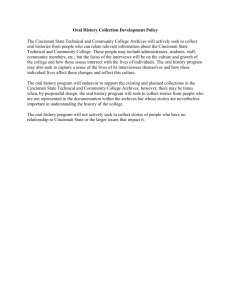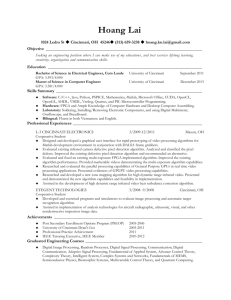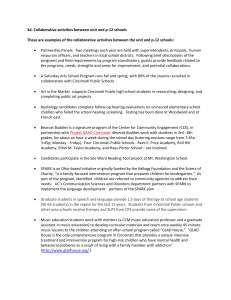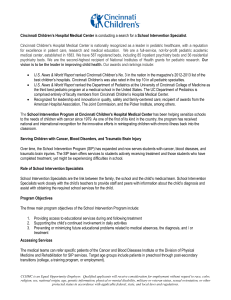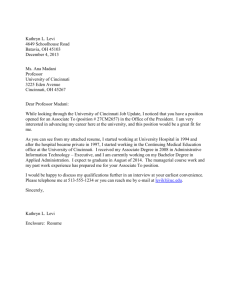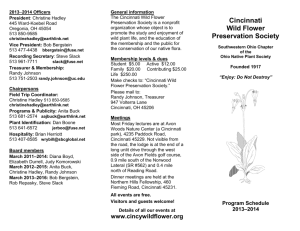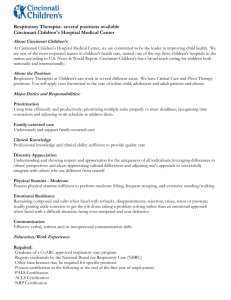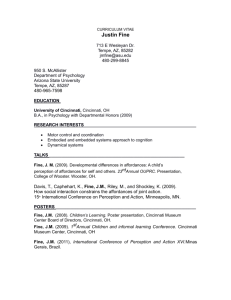File
advertisement
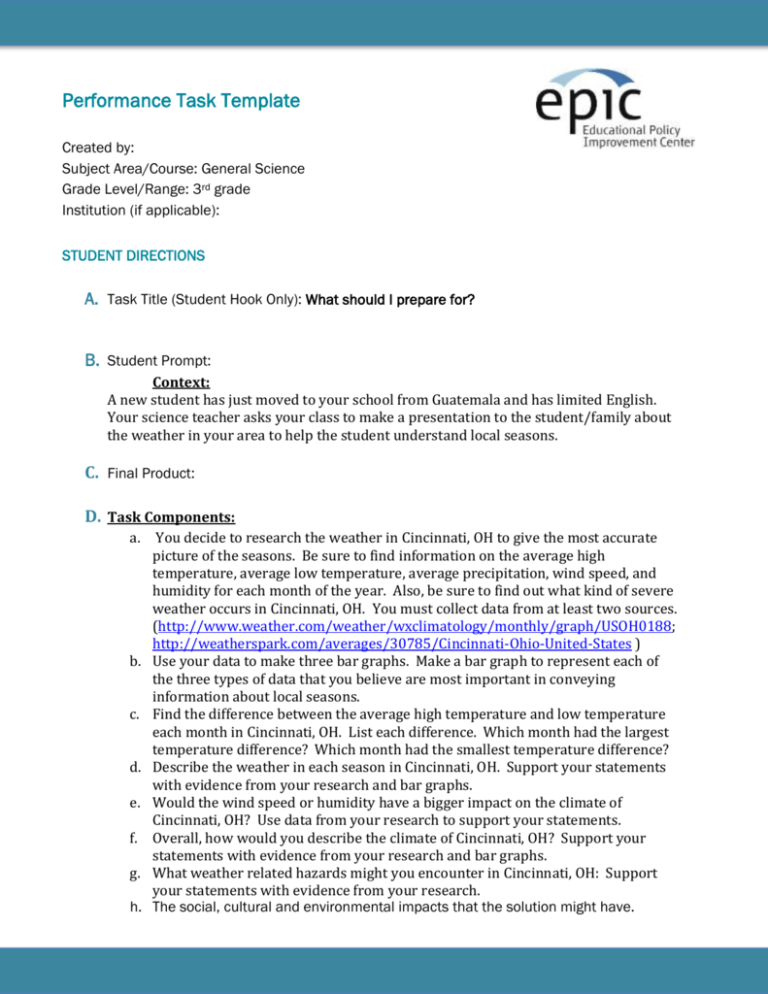
Performance Task Template Created by: Subject Area/Course: General Science Grade Level/Range: 3rd grade Institution (if applicable): STUDENT DIRECTIONS A. Task Title (Student Hook Only): What should I prepare for? B. Student Prompt: Context: A new student has just moved to your school from Guatemala and has limited English. Your science teacher asks your class to make a presentation to the student/family about the weather in your area to help the student understand local seasons. C. Final Product: D. Task Components: a. b. c. d. e. f. g. h. You decide to research the weather in Cincinnati, OH to give the most accurate picture of the seasons. Be sure to find information on the average high temperature, average low temperature, average precipitation, wind speed, and humidity for each month of the year. Also, be sure to find out what kind of severe weather occurs in Cincinnati, OH. You must collect data from at least two sources. (http://www.weather.com/weather/wxclimatology/monthly/graph/USOH0188; http://weatherspark.com/averages/30785/Cincinnati-Ohio-United-States ) Use your data to make three bar graphs. Make a bar graph to represent each of the three types of data that you believe are most important in conveying information about local seasons. Find the difference between the average high temperature and low temperature each month in Cincinnati, OH. List each difference. Which month had the largest temperature difference? Which month had the smallest temperature difference? Describe the weather in each season in Cincinnati, OH. Support your statements with evidence from your research and bar graphs. Would the wind speed or humidity have a bigger impact on the climate of Cincinnati, OH? Use data from your research to support your statements. Overall, how would you describe the climate of Cincinnati, OH? Support your statements with evidence from your research and bar graphs. What weather related hazards might you encounter in Cincinnati, OH: Support your statements with evidence from your research. The social, cultural and environmental impacts that the solution might have. E. Materials and Resources Required: Additional research and data summaries to what is provided here or access to research databases and technology to allow students to conduct their own research. TEACHER INFORMATION F. Task Title (Hook + Instructional Content Area): What should I prepare for? G. Task Overview: H. Critical Abilities Addressed in the Task: I. Content Standards (Common Core or Other - Subject, Number, & Text): CCSS-M (bolding represents the part of the standard addressed) 3.OA.D.8 Solve two-step word problems using the four operations. Represent these problems using equations with a letter standing for the unknown quantity. Assess the reasonableness of answers using mental computation and estimation strategies including rounding. 3.MD.B.3 Draw a scaled picture graph and a scaled bar graph to represent a data set with several categories. Solve one- and two-step “how many more” and “how many less” problems using information presented in scaled bar graphs. For example, draw a bar graph in which each square in the bar graph might represent 5 pets. NGSS Students who demonstrate understanding can: 3-ESS2-1. Represent data in tables and graphical displays to describe typical weather conditions expected during a particular season. 3-ESS2-2. Obtain and combine information to describe climates in different regions of the world. 3-ESS3-1. Make a claim about the merit of a design solution that reduces the impacts of a weather-related hazard. CCSS-ELA RI.3.1 Ask and answer questions to demonstrate understanding of a text, referring explicitly to the text as the basis for the answers. RI.3.9 Compare and contrast the most important points and key details presented in two texts on the same topic. W.3.8 Recall information from experiences or gather information from print and digital sources; take brief notes on sources and sort evidence into provided categories. J. College and Career Connections: Time Requirements: This task is intended as summative. After a unit on Earth’s weather systems, this task would be completed to allow students to conduct research and evaluate collected data as well as to conduct an investigation and use the results of the investigation to solve a problem. This task would take approximately 4 50-minute class periods: Component A would take 1 day, Components B, C, and D would take 1 day and Components E, F, G, H, and I would take 2 days. K. Teacher Resources: L. Prior Knowledge: M. Scaffolding Techniques: N. Teacher Procedures During Administration: Teachers act largely as facilitators during this task – encouraging students to justify their conclusions and decisions. There may be the need to implement direct instruction throughout the task, depending on students’ prior knowledge. O. Extensions (optional): P. Solutions and/or Strategies: [evidence statements go here] Mathematics 1. Students’ models of functions accurately show the trends of temperature changes over the seasons. 2. Students accurately determined the best graph to fit the data ( to show and represent the changes in seasons. 3. Students appropriately extrapolated the data to make determinations about the temperature change Science Q. Sample Top-Score Responses: R. Post-Administration Notes:

